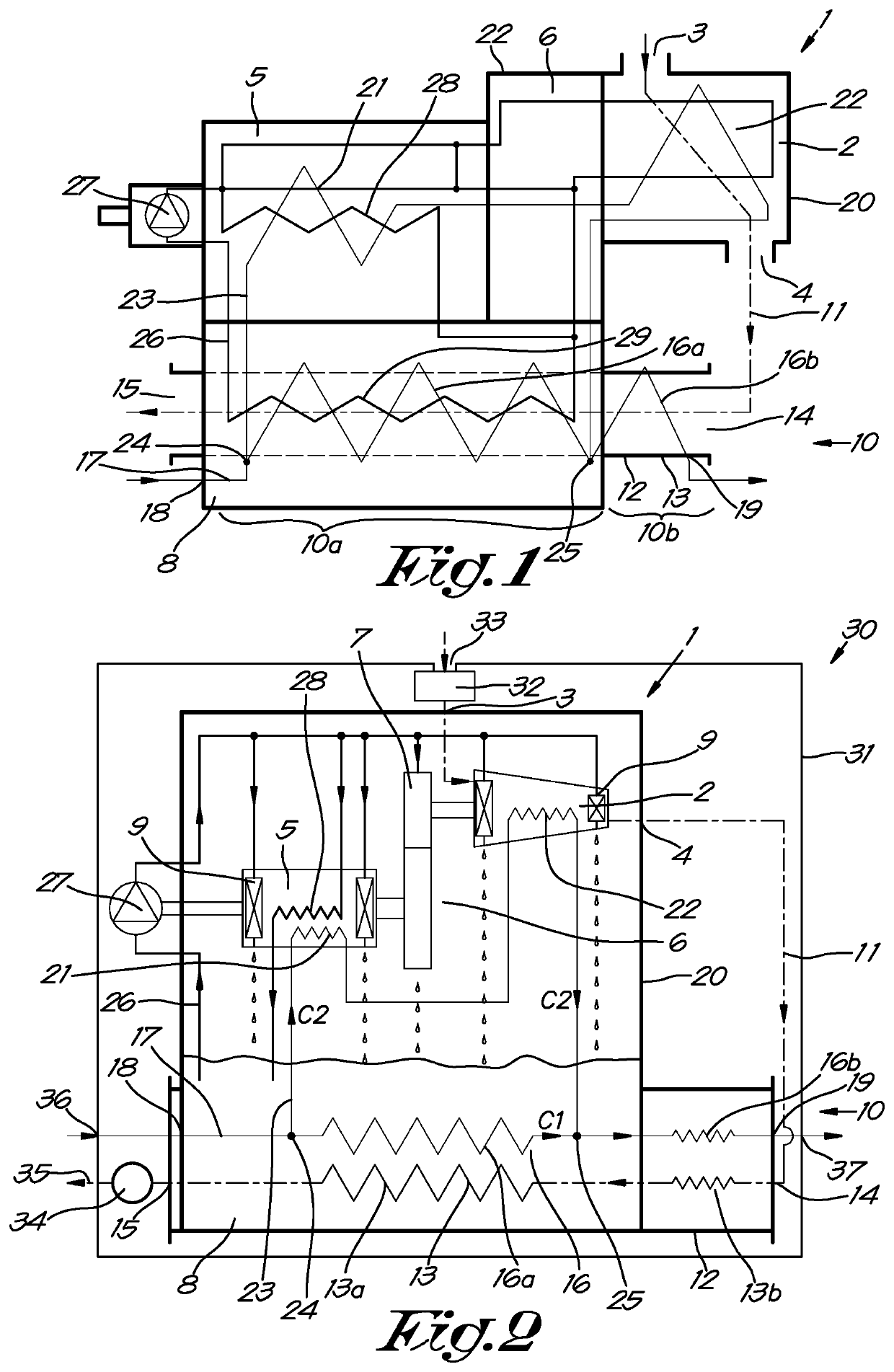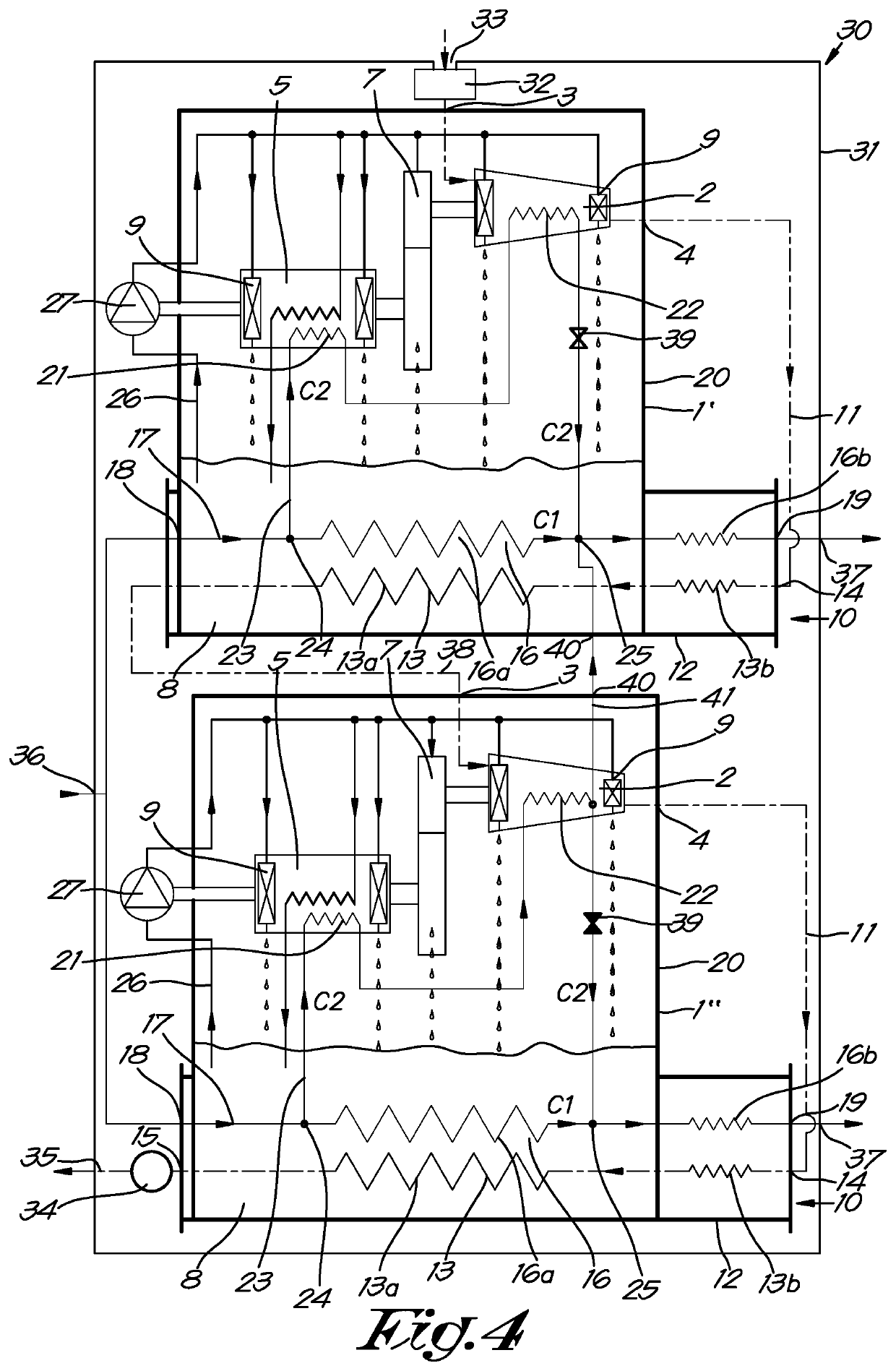Compressor module for compressing gas and compressor equipped therewith
- Summary
- Abstract
- Description
- Claims
- Application Information
AI Technical Summary
Benefits of technology
Problems solved by technology
Method used
Image
Examples
Embodiment Construction
[0061]The compressor module 1 shown in FIGS. 1 and 2 is composed of a compressor element 2 with an input 3 for gas to be compressed and an output 4 for the compressed gas; an electric motor 5; in this case a gearbox 6 between the compressor element 2 and the motor 5 with gears 7 for the transmission of the motor torque to the compressor element 2; an oil sump 8 with oil for lubricating and cooling the bearings 9 of the motor 5 and the compressor element 2 and of the gears 7; and a gas cooler 10 for cooling the compressed gas originating from the compressor element 2, whereby this gas cooler 10 is connected via a pipe 11, shown schematically, to the output 4 of the compressor element 2.
[0062]In this case the gas cooler 10 comprises a tube 12 that forms the primary section 13 of the gas cooler 10 through which the compressed gas originating from the compressor element 2 can be guided via a gas inlet 14 to a gas outlet 15, to which a network of users of compressed gas can be connected,...
PUM
 Login to View More
Login to View More Abstract
Description
Claims
Application Information
 Login to View More
Login to View More - R&D
- Intellectual Property
- Life Sciences
- Materials
- Tech Scout
- Unparalleled Data Quality
- Higher Quality Content
- 60% Fewer Hallucinations
Browse by: Latest US Patents, China's latest patents, Technical Efficacy Thesaurus, Application Domain, Technology Topic, Popular Technical Reports.
© 2025 PatSnap. All rights reserved.Legal|Privacy policy|Modern Slavery Act Transparency Statement|Sitemap|About US| Contact US: help@patsnap.com



